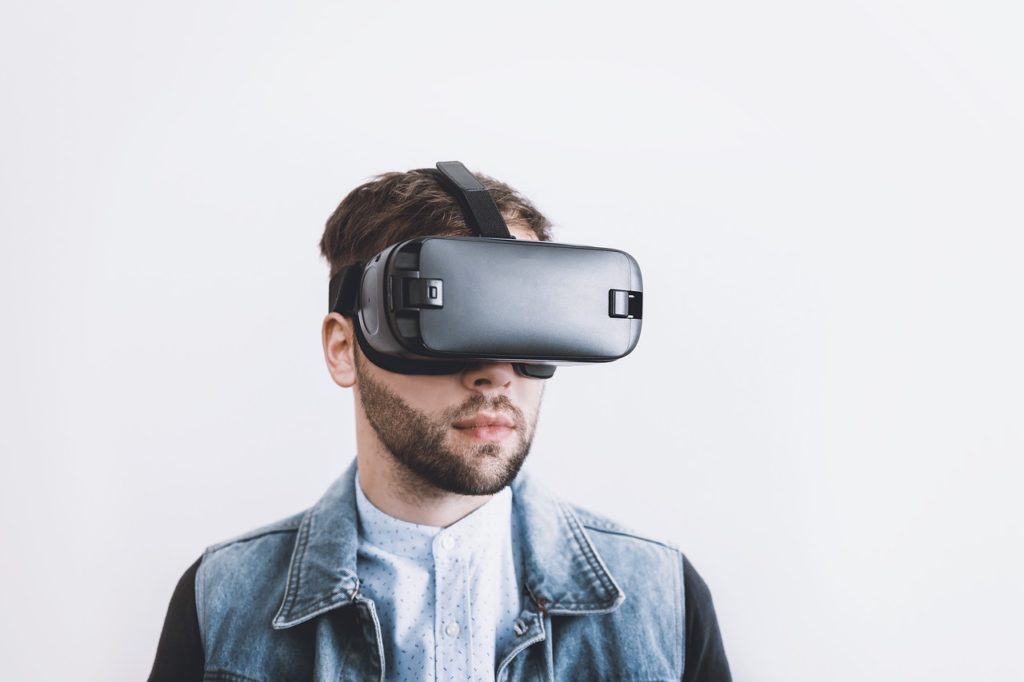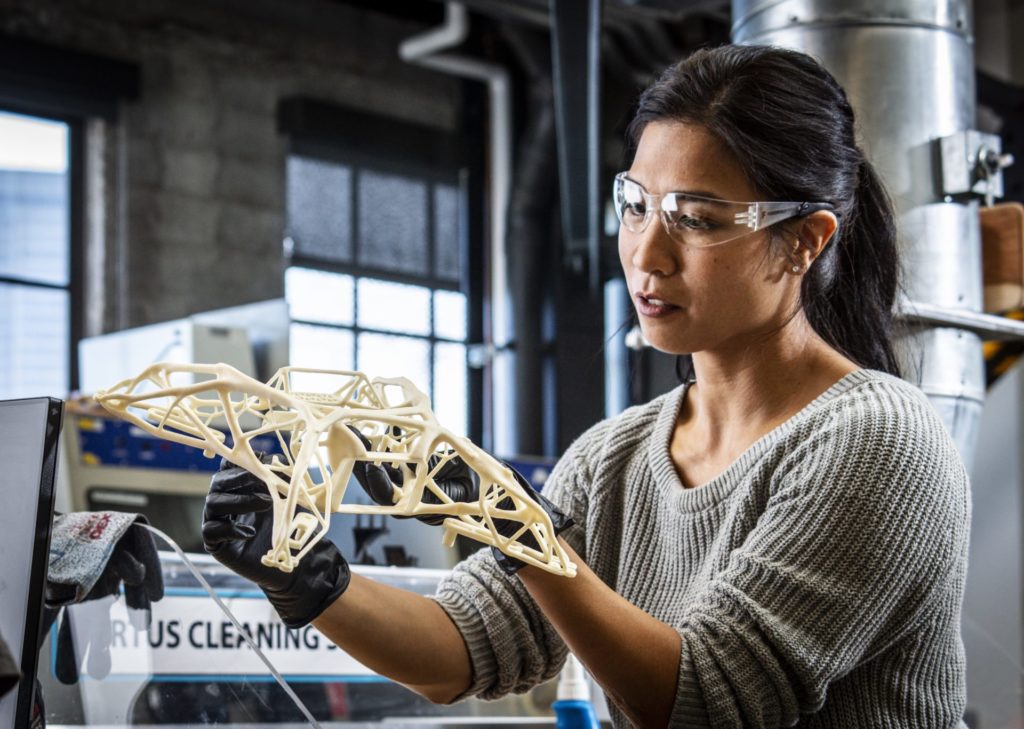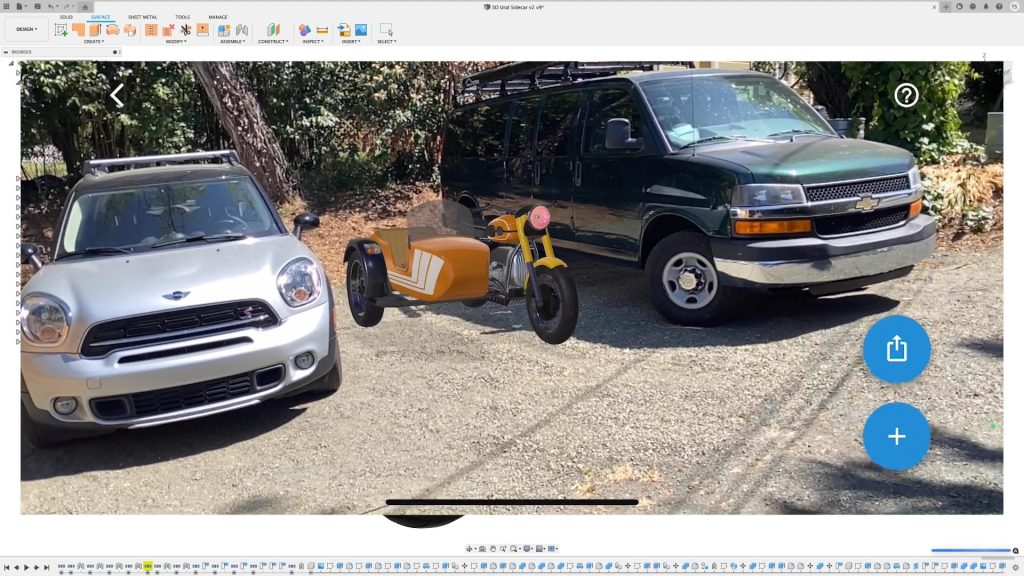& Construction

Integrated BIM tools, including Revit, AutoCAD, and Civil 3D
& Manufacturing

Professional CAD/CAM tools built on Inventor and AutoCAD
5 min read
This post is also available in: Italiano (Italian)
We don’t have realistic holograms quite yet, but engineers have utilized AI, AR and VR to improve computer-aided design. This guide provides distinction between all three mediums with definitions and examples.

With all the technological abbreviations floating around the internet, it’s easy to get concepts mixed up from time to time. Welcome to the ultimate guide on all things AI (artificial intelligence), AR (augmented reality), and VR (virtual reality). This guide provides definitions, examples, and applications.
With each passing month, artificial intelligence continues to expand into different engineering and manufacturing sectors. So what is AI? Artificial intelligence is a sector of computer science specifically aimed at executing tasks that usually require human intelligence. AI is quickly advancing, and innovations in deep learning and machine learning, among others, are shifting the direction of the technology industry.
AI is usually spliced into two subcategories: Narrow AI and Artificial General Intelligence (AGI).

Of the two subcategories, Narrow AI is the most tangible and measurable. Most AI advancements occur under this category. Narrow AI has consistently grown due to breakthroughs in machine learning, deep learning, natural language processing (NLP), computer vision, and speech recognition.
Additive manufacturing, or 3D printing, allows for new and innovative design and creation. Engineers can produce new shapes and complex lattices while saving time and raw materials. Within the last few years, AI has been integrated into additive manufacturing. This process is called generative design. Designers can input design parameters — materials, manufacturing methods, spatial and weight requirements, cost, etc. — in computer-aided design (CAD) software like Fusion 360 during the generative design process. Then, AI analyzes all possible design iterations and suggests thousands of alternatives.
Other benefits of generative design software are as follows:
AGI is the creation of a machine with human-like intelligence. Current technology is, at least, a few decades away from creating an actual AGI machine. Within pop culture, AGI usually takes the role of a robot with intelligence that supersedes humans. Hopefully, by the time AGI becomes a reality, engineers will better understand how to handle a sentient robot with super intelligence.
Setting aside the plot of the next Terminator movie, AI can be found in its narrowest forms throughout everyday life. Some applications include:

Augmented reality is a digital platform used to view three-dimensional renderings in real-life environments. Using an iPhone, an engineer can access a USDZ file — a file format created by Pixar and Apple that displays AR content on iOS devices — which then displays a 3D design onto a real-life environment via the phone’s camera.
An engineer can manipulate the 3D design on the phone’s screen using their fingers or by walking the phone around the central design/focal point. AR is a perfect environment to check product functionality and accessibility. AR can be used to preview consumer products, view furniture in a home or other desired setting, examine prototype builds, and so much more.
An engineer can manipulate the 3D design on the phone’s screen using their fingers or by walking the phone around the central design/focal point. AR is a perfect environment to check product functionality and accessibility. AR can be used to preview consumer products, view furniture in a home or other desired setting, examine prototype builds, and so much more.
An engineer can manipulate the 3D design on the phone’s screen using their fingers or by walking the phone around the central design/focal point. AR is a perfect environment to check product functionality and accessibility. AR can be used to preview consumer products, view furniture in a home or other desired setting, examine prototype builds, and so much more. Fusion 360 now supports USDz export, so you can visualize your designs in a real-life environment.
USDZ is an unencrypted zip file that packages all data required for an AR rendering. USDZ files can contain:
Virtual reality is most likely a familiar term for most people by now. VR differs from AR in a very distinct way: VR is a computer-generated simulation that visually immerses a person into another reality or environment. The user can manipulate the 3D environment by wearing goggles and using gloves or controllers. Whereas AR superimposes a 3D image using a graphical overlay on a camera feed — as previously mentioned in the section above.
VR has been regarded as a passing trend, but as tech continues to improve, so will VR. Virtual reality has been widely popular in the gaming industry. PlayStation and Microsoft have both invested in virtual reality headsets and games. One recent game, Star Wars: Squadrons, utilized VR by placing the player into the cockpit of virtual, iconic spaceships from the famous movie franchise.
VR can be used in similar applications to AR, such as virtual product inspection and manipulation. With virtual reality, engineers could take the 3D rendering of their product and use it in a virtual environment with specified parameters. This process could revolutionize how products are tested before real-world production.
Does your next project involve generative design, or does it require observation in augmented reality? Fusion 360 provides integrated CAD (computer-aided design) and CAM (computer-aided manufacturing) software for all of your design and manufacturing needs.


By clicking subscribe, I agree to receive the Fusion newsletter and acknowledge the Autodesk Privacy Statement.
Success!
May we collect and use your data?
Learn more about the Third Party Services we use and our Privacy Statement.May we collect and use your data to tailor your experience?
Explore the benefits of a customized experience by managing your privacy settings for this site or visit our Privacy Statement to learn more about your options.